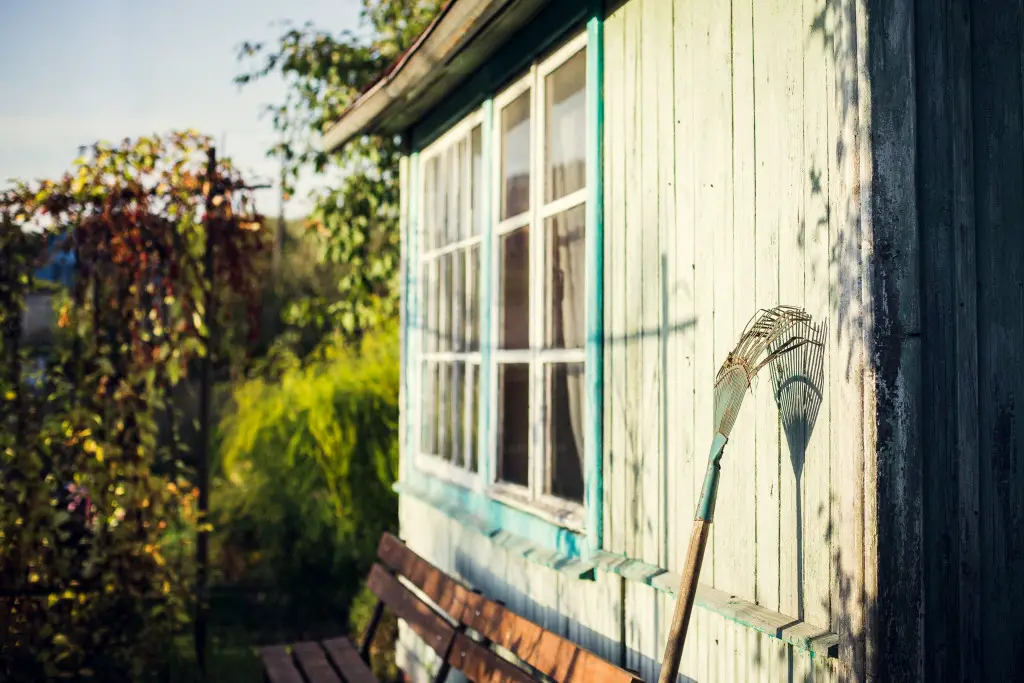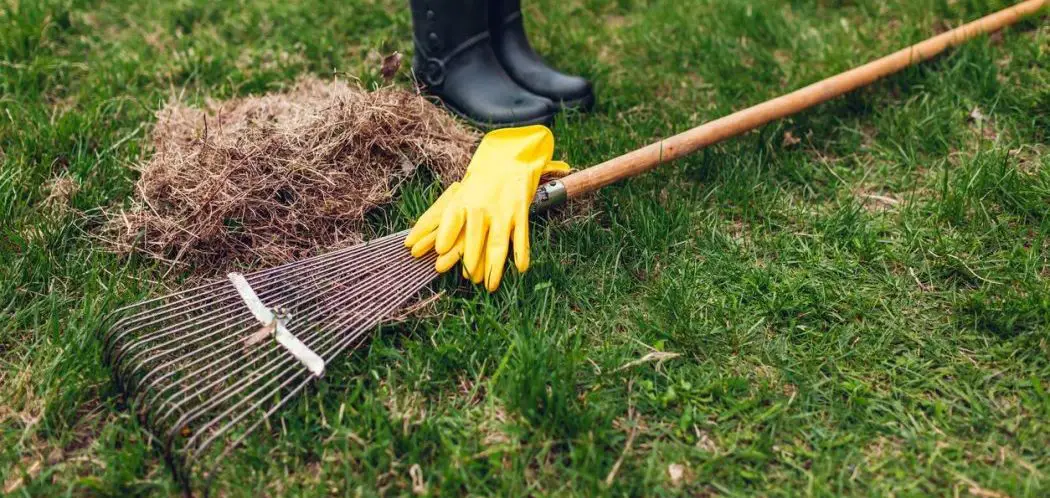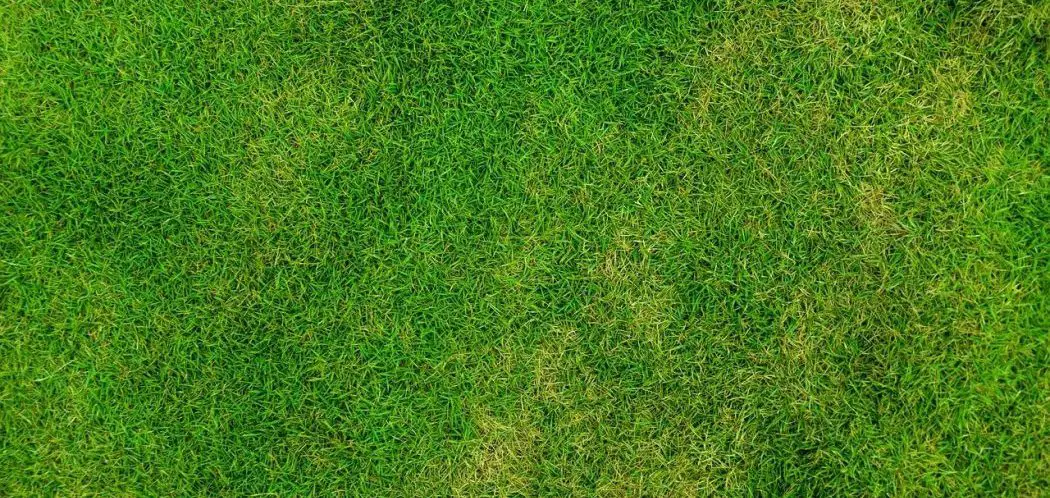There are multiple ways to dethatch your lawn that use various different tools. Some methods require machinery which can be costly and unnecessary for small areas of your yard.
A rake is certainly the cheapest option you have that can be just as effective in some scenarios.
Why Is It Important to Dethatch Your Lawn?
Gradually over time, small blades of grass die in your lawn and they end up getting bunched together just above the soil. This is known as thatch.
While a small amount of this organic material can actually be beneficial to your lawn, too much of it cannot be broken down by natural processes.
As a result, it ends up grouping together to form a barrier between your grass and the soil. This can be a problem since any time you water lawn or it rains, the thatch will prevent the moisture/air from reaching the root level which inhibits good future growth.
Similarly, if you use fertilizer on your lawn, humic acid, weed stop or any other manual application, the thatch is very likely to prevent it from reaching the soil level to get into the root system.
The best way to deal with this issue is to dethatch your lawn.
How Do I Know if I Have a Thatch Problem?
You’ll want to look for any dead organic matter in your grass that may or may not be easy to spot. You may find the grass is spongy due to the build of excess roots. It will probably also look discolored during the warmer months.
How to Use a Thatch Rake (Which Side to Use)
A thatch rake is not the same as the standard rake you likely already have.
A thatching rake has two sides. One has a curved end which is used to move back the soil after you thatch your lawn. It digs into the grass and pulls material off the ground. The straight end is used to dethatch your lawn and bring all the dead grass out. This side will not dig in quite as deep.
I use this AMES 2915100 Adjustable Thatch Rake (link to Amazon)
You want to rake very lightly over the grass, not the soil! The way that you use a thatch rake depends on how much material you want to pull out of the ground.
If you want to do some light raking, you’ll use the tines with the flat side. If you want to dig in deep and pull up the most material possible, use the winged side.
Typically, a thatch rake will have bolts near the bottom that allow you to adjust the tilt on the head of the rake. Depending on your height, you can adjust the setting to suit your needs. If you’re taller the average, you may want to use more of an aggressive tilt.
Use push and pull strokes, to rip through the thatch. You don’t want to pull to hard. Also, shorter motions are better here.
Thatch rakes can certainly be tiring to use for large areas of your lawn. It’s can also be quite time consuming too. Thatch rakes are better used for small areas at time.
When Should You Dethatch Your Lawn?
You’ll typically want to do this early in the spring when the grass is beginning to grow. Avoid doing this on a hot sunny day if you’re using a rake. It’s a great idea to dethatch your lawn before overseeding so that the seeds can get as much air and moisture as possible for the best growth.
Should You Use a Thatch Rake or a Garden Rake?
Most homeowners probably already have a garden rake, it’s a staple item that most people will already have but thatch rakes are certainly less common.
Thatch rakes cost more than regular rakes and you’ll also find that you won’t use them as often.
The tines of a regular rake tend to be quite flimsy. While it can be effective for pulling up leaves and anything loosely attached to the ground, it’s not the best tool for getting under the grass blades. A thatch rake is much better for this since you can scrape under the thatch without any flex.
Don’t Want to Use a Rake?
One option you have is to change the height of your mower. If the thatch is very thick, you may have to gradually lower it down over time. The height you set the mover to will depend on the type of grass you have.
If you don’t want to use a rake, you might want to consider a power rake. This does have an engine so it will require gasoline for it to run. This is a powered machine which is not self-propelled but can work great for larger lawns where using a rake is not appropriate. It will bring up a lot of the thatch and debris in your yard but you will need to go around after with your mower or a rake to pick it all up.

What to Do After You’ve Dethatched Your Lawn?
Keep in mind that your lawn may not be looking it’s best after dethatching. This is especially true if you’re using any kind of hard machinery which can be very rough on your lawn. This is completely normal and you will need to give it some time to recover before you start seeing results.
A good strategy is to make sure that your lawn gets well-watered over the next few weeks as your lawn comes back to a healthier state.
In Summary
Understand that they are an amazing tool, especially if you have smaller areas of grass that you need to use it. If you’re ok with doing manual work, a thatch rake is a drop in the bucket compared to a really well made power rake but using it for a lawn that is over 2000 square feet can take a little bit of time. It will rip through the thatch which most power rakes are unable to do.
Investing in a thatch rake is probably worth, they won’t break the bank and they will last for a long time. If the area of your yard is very large you might need to look at purchasing/renting some machinery in order to get the job done more efficiently.






